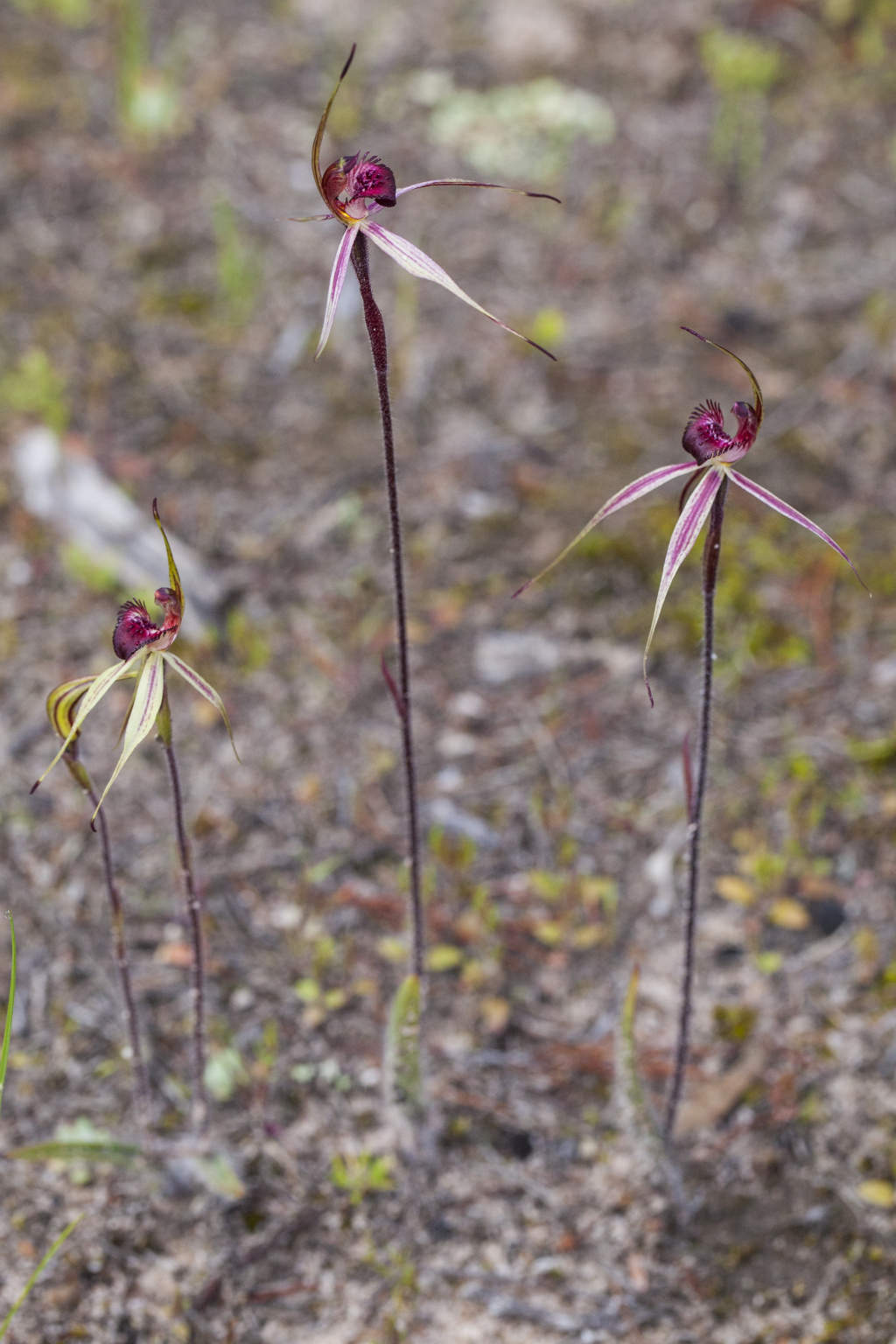Caladenia lowanensis
G.W.CarrFlowering plant 12–25 cm tall. Leaf 7–12 cm long, 8–12 mm wide. Flowers solitary; perianth segments 2–3.5 cm long, pale yellow with red lines and suffusions; lateral sepals divergent, deflexed, flattened at base, 3–4 mm wide, tapered to a filiform, clubbed tail, clubs linear, 5–8 mm long, with reddish, contiguous, sessile glands; petals spreading to deflexed, shorter than sepals, flattened at base, tapered to a long acuminate apex. Labellum curved forward with apex recurved and lateral lobes erect, lamina ovate, more or less 3-lobed, 10–14 mm long and 6–8 mm wide (when flattened), red at least distally, proximal half pale yellowish, with red veins; marginal calli on lateral lobes linear, to 2 mm long, diminishing in size towards the (usually) entire or slightly irregular mid-lobe; lamina calli in 4 to 6 rows, somewhat crowded, glossy, not extending onto mid-lobe, stout and flat-topped, to 1 mm long at base of lamina, decreasing in size towards apex. Flowers Sep.–Oct.
LoM, Wim, GipP, Gold, GGr. Also SA. Until recently thought to be endemic to Victoria where found at a few sites in and near the Little Desert National Park mostly in Eucalyptus leucoxylon/Callitris gracilis woodlands on well-drained red-brown sandy soils.
Known from very few plants and regarded as endangered.
Apparent hybrids with Caladenia tensa and C. cardiochila have been observed.
Entwisle, T.J. (1994). Orchidaceae. In: Walsh, N.G.; Entwisle, T.J., Flora of Victoria Vol. 2, Ferns and Allied Plants, Conifers and Monocotyledons, pp. 740–901. Inkata Press, Melbourne.
 Spinning
Spinning

